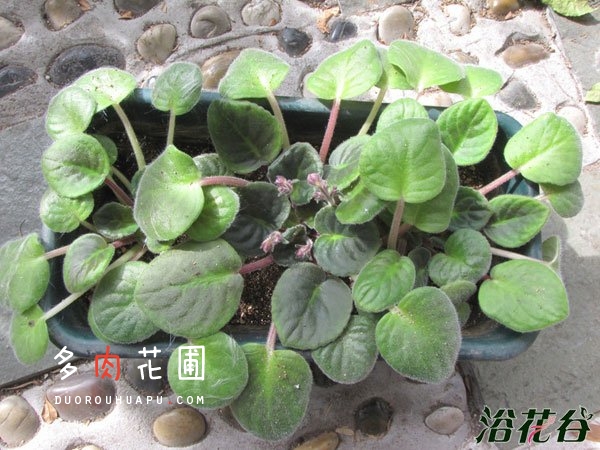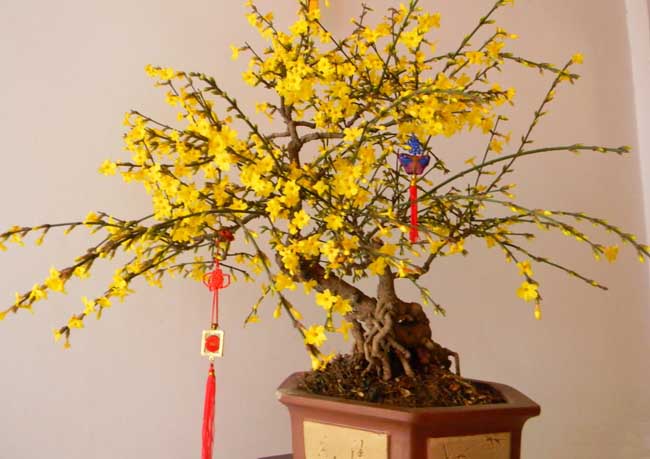How to raise African violets? The configuration of African violets. African violets are easy to raise.
How to raise African violets:
Selection of African Violet varieties: double Collina (flower white), bliss (flower blue), snow blue child (flower purple), ashamed bride (pollen red).
Plant selection of African violets: when the seedlings have 2 or 3 leaves.
Selection of African Violet flowerpots: it is appropriate to choose shallow pots or hanging pots. The mouth of the pot is about 1 big 3 of the diameter of the adult plant, and the maximum diameter is only 13 cm and 15 cm.
Preparation of African Violet Culture soil: loose, fertile, slightly acidic soil can be used.
Preparation method 1: rotten leaf soil and sandy soil were mixed at 3:2.
Preparation method 2: rotten leaf soil, peat soil and sandy soil were prepared at 1:1:1.
African Violet flower cultivation: first put broken tiles in the basin, and then add culture soil, put the seedlings into the soil, add culture soil, pour water once after the basin, and then put it in a cool place for a few days before you can be transferred to normal management.

How to raise African violets
First, how to raise African violets-- cutting
African violets can mainly use cutting and striping methods. Cuttage is an easy way to plant African violets, which increases its survival rate. Cuttings are usually carried out in late spring and early summer, using strong branches in the middle to cut cuttings until the mouth of the cuttings stops condensing. The branches can be inserted into the soil matrix and wait for rooting and growth. After the African violets have grown two leaves, they can begin to transplant potted plants.
Second, how to raise African violets-- pressing
African violets can also be propagated by striping, and it is best to use the branches of the second year. Peel off some of the branches of African violets and wrap them with plastic film and soil. Rubber trees will slowly begin to take root and grow into new African violets.
III. How to raise African violets-- habits
African violets love fertile soil, so they should pay attention to supplement nutrition when they are young, and use a small amount of cake fertilizer as base fertilizer to ensure the fertility of the soil. African violets should not use nitrogen fertilizer, too much nitrogen fertilizer will cause African violets to skew and not look good. African violets like to be moist, keep water in summer and water every day but don't cause waterlogging.
The role of African violets in raising African violets
African violets are often used in home decoration and beautification. Do you know how to raise African violets? Next, I'm going to tell you about the role of African violets.
How to raise African violets
African Violet prefers semi-shade, warm and humid environment, pay attention to ventilation, avoid high temperature and strong light. Spray watering can be used, based on the principle that the surface of the basin soil is not dry and not watered, but it can not be dry thoroughly, otherwise it will affect the growth and flowering. General fertilizers require ternary or multi-component compound fertilizers of nitrogen, phosphorus and potassium. The growth temperature should not be higher than 28 ℃, generally between 15-25 ℃. The high temperature environment is not conducive to growth. If African violets are cultured due to lack of light, they will grow leaves and do not blossom. For example, if the sun is too strong, the leaves will grow macula.
The role of African violets:
1. Ornamental value
African violets are short and can blossom all the year round with velvet-thick leaves, handsome and elegant flowers, rich and colorful flowers and high ornamental value. they are excellent ornamental plants indoors.
2. Decorate the home
African violets are all hybrid cultivation, with many varieties, and there are many kinds of flowers, such as white, pink, red and blue. The plant is short, flowering in four seasons, and is more shade-resistant. It is a good decoration for indoor windowsill, living room, case table and so on.
3. Purify the air
African Violet can purify indoor air, improve indoor air quality, beautify the environment, reconcile mood and relieve pressure, so it is an ideal material to improve indoor air quality.
4. Gifts
African violets are small potted ornamental plants, which are especially suitable for middle-aged and elderly people. It takes a long time to bloom, easy to move and easy to breed. Potted flowers decorate the desk, desk, windowsill, very elegant and beautiful, can be given as gifts to relatives and friends, but also good taste.
- Prev

African violet breeding methods
African violet breeding method, African violet for the Gesneriaceae, perennial evergreen herbaceous flowers, stems very short, leaves fleshy, dense fine hair, Mao shape, heart shape or wave cluster, plant posture was lotus-shaped. Flowers bloom often 3~5 pedicels come out from leaf axils successively, and flowers are 3~5 or more on pedicels.
- Next

How to raise the bonsai of plum blossoms
How to cultivate potted plum blossom bonsai, 3 parts of rotten leaf soil, 3 parts of garden soil, 2 parts of river sand and 2 parts of mature barnyard manure can be evenly mixed, and the slightly acidic soil with loose topsoil and slightly clayey subsoil is the best. Generally, the plum blossom is planted in a tile pot first, and then put on an elegant and beautiful flowerpot when the plant is about to blossom and watch.
Related
- Fuxing push coffee new agricultural production and marketing class: lack of small-scale processing plants
- Jujube rice field leisure farm deep ploughing Yilan for five years to create a space for organic food and play
- Nongyu Farm-A trial of organic papaya for brave women with advanced technology
- Four points for attention in the prevention and control of diseases and insect pests of edible fungi
- How to add nutrient solution to Edible Fungi
- Is there any good way to control edible fungus mites?
- Open Inoculation Technology of Edible Fungi
- Is there any clever way to use fertilizer for edible fungus in winter?
- What agents are used to kill the pathogens of edible fungi in the mushroom shed?
- Rapid drying of Edible Fungi

